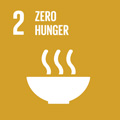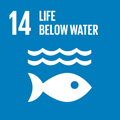- Docente: Luciana Mandrioli
- Credits: 7
- SSD: VET/03
- Language: Italian
- Teaching Mode: In-person learning (entirely or partially)
- Campus: Cesena
- Corso: First cycle degree programme (L) in Aquaculture and Fish Production Hygiene (cod. 8834)
-
from Sep 19, 2024 to May 19, 2025
Learning outcomes
At the end of the course the student knows: -what are the causes of illness; -what are the main diseases affecting fish species; - how to apply the basic knowledge, such as those of histology, physiology, chemistry, physics, nutrition and aquaculture, to integrate the mechanisms that regulate the appearance of diseases; - how to deal with the critical study of the material indicated by the teacher in order to obtain solid basic concepts; - how to prepare a powerpoint presentation relating to critical reading and the translation of a review or specific experimental work on the subject, to be commented with colleagues and with the teacher during the lessons; - how to set up a differential diagnostic reasoning; -how to set up the correct sampling ; - the anatomical-pathological aspects concerning the main infectious diseases affecting troticulture and salmonids, marine fish, carp, eel and some animal animal models (zebrafish, octopus) integrated by the notions of contemporary or subsequent courses such as for example parasitic and infectious diseases, ecotoxicology.
The student is also able to: - recognize the pathological organs and tissues and associate the most probable causes of the disease - carry out a complete necropsy examination in order to perform a correct sampling - use the optical microscope and interpret cytological and histological preparations - written summary of the pathological findings observed, in order to interact with the manager of the aquarium/ tank/plant.
The "practical" test, in part of it, refers both to the verification of knowledge (to know) and to skills (to know how to do).
Course contents
Pathology
1-Concept of disease and classification of the determining causes. Cell damage and mechanisms involved. Signal transduction.
2-Cell adaptive processes; metaplasia, dysplasia and anaplasia
3-Cellular degenerations characterized by accumulation of substances.
4-Cell death. Triggering pathways for cell death and main cellular mechanisms involved.
5-Inflammation: cardinal signs, concept of exudate. Acute and chronic inflammation
6-Hemodynamic disorders
7-Immune system disorders: hypersensitivity reactions
8-Environmental causes
9-Nutritional causes: vitamin imbalances
10- Nutritional causes: mineral imbalances
Fish pathology:
Systematic pathology of the main organs / systems of fish species: 1- skin, 2- gills, 3-kidney, 4-liver, 5- stomach and intestine, 6-hematopoietic, 7-skeleton- muscular system, 8-eye and nervous system.
Readings/Bibliography
Mandatory:
PATHOLOGY
1- Robbins e Cotran- Pathologic basis of diseases- Vol. 1. Elsevier
FISH PATHOLOGY (choose one)
1-Roberts. Fish pathology. 4th edition. Wiley-Blackwell, 2012. 2-Ferguson: Systemic pathology of fish. A text and atlas of normal tissues in teleosts and their responses in disease. 2nd edition. Scotian Press, 2006. 3- Bruno, Noguera, Poppe: A colour atlas os salmonid diseases. Springer Verlag, 2013. 4- Noga. Fish Disease Diagnosis and Treatment. Second Edition. Wiley- Blackwell, Iowa, 2010. 5-Eiras, Segner, Wahli, Kapoor. Fish diseases. Science Publishers, USA, 2008. 6- Woo & Bruno. Fish Disease and disorders. Second Edition. CAB International, UK, 2011.
Suggested:
The aquarium fish medicine handbook. Yanong RPE, Lewbart GA. CRC Press, 2024.
Nutritional Fish and Shrimp Pathology: A Handbook. Tacon AGJ, Tran L. Part of the European Association of Fish Pathologies / 5m Books series.
Aquaculture Pathophysiology Volume I. Finfish Diseases. F. S.B. Kibenge, B. Baldisserotto, R. S-M. Chong. Academic Press, 2022.
More in depth material, dedicated in particular to not attending students
https://www.askjpc.org/vspo/show_page.php
https://davisthompsonfoundation.org/noahs-arkive/
Teaching materials are being created and will be uploaded on Virtuale platform
Teaching methods
Frontal lessons
Working groups of students and students with the teacher
E-learning activities
Small group practical lessons in the laboratory classroom
In case of COVID-19 emergency precautional measures will be taken and lessons will be carried out remotely.
Assessment methods
Passing the exam includes a written exam, not mandatory and for those that would pass the first part after its end, related to Pathology and an oral test. The last one test consists of two questions concerning the topics of fish pathology, and includes also a practical test consisting in the observation of a slide, chosen from the cases discussed during the practical exercises or, alternatively, if a microscope could not be available, from the presentation of a pathological case chosen from those presented and discussed during the course or from an image from one of the mandatory textbooks. The practical test is considered passed if the tissue and the pathological process are recognized, which must be correctly presented, described and argued in such a way to set up a differential diagnosis. The final mark of the whole exam is the result of the average of the marks of Pathology and Fish Pathology. To pass the exam with the minimum score it is necessary to answer at least two questions and recognize the tissue and the basic pathological process in the practical part. The detailed presentation of the answers to the questions, demonstrating the development of a critical ability, combined with fine reasoning of differential diagnosis allow to reach gradually higher scores. Full marks and honours are given if a full answer is given and the practical test is successfully passed, having demonstrated the ability to articulate the diagnostic reasoning.
Teaching tools
ppt of the lessons on the virtuale platform
websites from which to select case studies of fish pathology, such as
Sampling demonstration videos
Laboratory materials for practical teaching
Office hours
See the website of Luciana Mandrioli
SDGs




This teaching activity contributes to the achievement of the Sustainable Development Goals of the UN 2030 Agenda.
